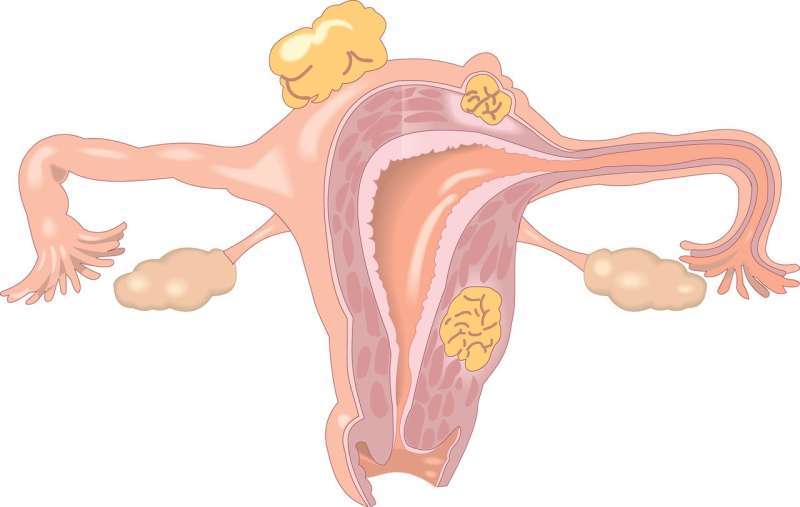October 18, 2017 report
Large variety of microbial communities found to live along female reproductive tract

(Medical Xpress)—A large team of researchers from China (and one each from Norway and Denmark) has found that the female reproductive tract is host to a far richer microbial community than has been thought. In their paper published in the journal Nature Communications, the group reports collecting samples from several parts of the reproductive tracts of volunteer women and what they found in studying them.
Scientists have long known that that the vagina plays host to a highly populated microbial community—trillions of bacteria live there. But, as the researchers note, much less is known about the biome that exists in the rest of the reproductive tract. To learn more, the researchers enlisted the assistance of 110 female volunteers in their child-bearing years—samples were collected from one or more parts of their reproductive tracts from the vagina to the fallopian tubes. Some of the samples were obtained during routine office visits, others during previously scheduled laparoscopy procedures.
The researchers than performed 16S rRNA sequencing on all of the samples to identify which, if any, microbes were living in a given part of the reproductive tract. After classification, the researchers compiled all the data to allow for comparisons between the individual women. The team confirmed earlier findings that the vagina is chock-full of bacteria, particularly Lactobacillus. But they also found that other parts had different microbes—there were few Lactobacillus, for example, in the lining of the uterus or fallopian tubes; instead, there were more Pseudomonas. They report also that that the microbial community changed on an individual basis depending on where the women were in their menstrual cycle. And they found that microbial communities were different for women with diseases or conditions, such as when they had benign uterine tumors.
The team reports that they also found evidence showing that contrary to popular opinion, babies are not held in a sterile environment while developing inside the uterus—the placenta was not sterile, either. The researchers note their work is just the beginning of a much larger effort to learn about the female reproductive tract microbial community. They suggest more research could lead to a better understanding of what is normal and what is not, as well as reproductive tract ailments and ways to treat them.
More information: Chen Chen et al. The microbiota continuum along the female reproductive tract and its relation to uterine-related diseases, Nature Communications (2017). DOI: 10.1038/s41467-017-00901-0
Abstract
Reports on bacteria detected in maternal fluids during pregnancy are typically associated with adverse consequences, and whether the female reproductive tract harbours distinct microbial communities beyond the vagina has been a matter of debate. Here we systematically sample the microbiota within the female reproductive tract in 110 women of reproductive age, and examine the nature of colonisation by 16S rRNA gene amplicon sequencing and cultivation. We find distinct microbial communities in cervical canal, uterus, fallopian tubes and peritoneal fluid, differing from that of the vagina. The results reflect a microbiota continuum along the female reproductive tract, indicative of a non-sterile environment. We also identify microbial taxa and potential functions that correlate with the menstrual cycle or are over-represented in subjects with adenomyosis or infertility due to endometriosis. The study provides insight into the nature of the vagino-uterine microbiome, and suggests that surveying the vaginal or cervical microbiota might be useful for detection of common diseases in the upper reproductive tract.
© 2017 Medical Xpress



















